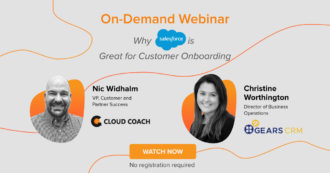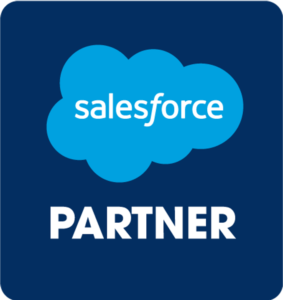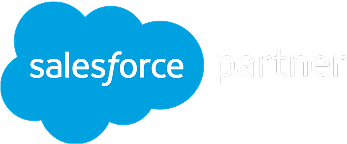 Webinar
Webinar
- Solutions
- Customer Onboarding
- Customer Success
- Professional Services Automation
- Project Management
- Project Portfolio Management
-
Solutions
-
Features
- Why Cloud Coach
- Customers
-
Resources

What is Revenue Recognition?
Revenue recognition is the process of recording revenue in a company’s financial statements. Revenue recognition is an essential part of accounting and is used to indicate when a business has earned revenue. For professional services organizations (PSOs), this can prove to be a complex task due to the nature of their work.
Revenue recognition accounting requires PSOs to recognize revenue when certain criteria are met, as outlined by the revenue recognition principle. According to this principle, revenue should be recognized only when it has actually been earned, not when it is actually collected. This also means that a PSO must have completed all tasks necessary for providing their service before they can record any associated income as revenue.
This can be a particular challenge for PSOs, because the completion of their projects often spans multiple periods and involves numerous tasks that may not have a clear start or endpoint. Some elements may not be easily measurable which makes it difficult to properly record income per the revenue recognition principle. It becomes especially difficult when the systems used to manage the tasks and milestones related to the what needs to be recognized don’t integrate with your accounting systems of record.
In order to address these issues, most PSOs implement strict internal policies that help ensure proper revenue recognition across their projects and activities. These policies generally require employees to track both time and costs associated with each project element so they can accurately calculate how much money they have earned from each task or component of a project at any given point in time. This data allows PSOs to better monitor project progress and enables them to label received income accordingly. In addition, utilizing software like Cloud Coach can help automate and digitally track all of this information, making revenue recognition easier than ever.
By implementing such policies and using project management software, PSOs can reliably follow the requirements outlined by the revenue recognition principle while also ensuring that all income associated with their work is properly recorded.
Revenue Recognition Methods
The percentage of completion method is the most popular option for recognizing revenue in PSOs. This method acknowledges payments based on the amount of work completed on a project or service the company offers at any given time. When using this approach however, organization need to consider what percent complete means to them, and how they intend to record in their PSA.
For example, some companies may recognize revenue based on the percent completion of tasks in the project while others companies may set up a milestone complete method throughout their project timeline to accurately calculate how much revenue has been earned during each project stage. Percent complete may also mean percent of hours burned on the project, regardless of the project deliverable status. Using these methods may differ based on the nature of your service, what is considered a point of value from the client, the billing model of your service, or even the contractual terms in your service agreements.
Another method is the completed contract method. With this method, companies recognize all revenues only after they have finished providing services or delivering goods to their customers completely and successfully collected payments, unlike the journal entry method. Companies generally wait until they have accumulated the amount before recognizing associated revenues under this approach. This is because there are no guarantees that payment will be made until after delivery has been made and accepted by the customer.
Whatever method the PSO chooses, understanding different revenue recognition methods is important for their financial success. While commonly used methods such as completed contract method may provide results that are easy to measure, % complete methods may provide more accurate results that reflect the financial state of your services revenue. It is when PSOs need to get to this level of granularity with real time reporting, that a PSA solution like Cloud Coach is a necessary investment.
To learn more about these various methods, interested parties can access comprehensive resources online, including detailed Revenue Recognition Methods PDFs, which explain each approach thoroughly, along with accompanying examples of real-life applications.
ADDITIONAL LINKS
IFRS 15 Revenue Recognition Methods
IFRS 15 Revenue Recognition is the current revenue recognition standard established by the International Financial Reporting Standard (IFRS) to standardize the way companies recognize and report revenue. IFRS 15 replaces the previous standard IAS 18. The purpose of IFRS 15 is to provide a single, comprehensive, and consistent set of rules for recognizing and measuring revenue from customer contracts.
Under IFRS 15, companies must recognize revenue when they transfer control of goods or services to customers. This means that a company will only be able to recognize revenue on transactions where it has transferred control over the goods or services to its customer. The amount of revenue recognized must also be based on the consideration stated in the contract with its customer.
Besides the role of setting rules for when revenue can be recognized, IFRS 15 also establishes different methods for recognizing various types of revenue streams. For instance, certain types of services may be subject to proportional performance models, while others may require output measures such as milestones or deliverables.
Furthermore, for complex contracts such as those found in construction or software-as-a-service (SaaS) businesses, IFRS 9 requires that firms use either cost-based or fair value estimation methods when recognizing revenues from these long-term projects.
IFRS 15 revenue recognition is an important step forward in providing a universal set of rules for recognizing and reporting revenues across all industries. It provides greater transparency into financial reporting processes while also allowing firms more flexibility in how they measure and recognize various types of income streams so that they can better manage their financial performance over time.
What are Revenue Recognition Criteria?
Revenue recognition criteria refer to the actual standards that must be met before revenue is recorded as earned. The criteria typically involve assessing whether or not a company has provided goods or services, has received payment for those goods or services, and can determine the amount of revenue to be recognized.
Revenue recognition is an essential part of accounting and is used to accurately represent a company’s financial performance. Under IFRS 15, the most important revenue recognition criteria are that the goods or services have been received by the customer and payment has been received by the business in the agreed-upon amount.
The revenue recognition criteria are based on the double-entry accounting system, which requires two entries to record an activity. In the case of revenue recognition, one entry records that cash has been received from customers, and the other records that products have been shipped or services have been rendered. This ensures that there is an equal debit and credit in the company’s accounts.
In addition to recording cash received from customers, companies may also need to recognize deferred revenue when they receive payments for goods or services before they are delivered or performed. A deferred revenue recognition journal entry involves recording a liability in the liabilities section of the balance sheet until delivery occurs. Once delivery takes place, then the liability can be removed from the balance sheet and replaced with a corresponding increase in revenues on the income statement.
Revenue recognition criteria help companies accurately report their financial performance by ensuring that all transactions related to sales are properly recorded following accepted accounting principles. By utilizing these criteria, companies can gain better insight into their current financial position and make better decisions about how best to utilize their resources going forward.
A Few Revenue Recognition Examples
Revenue recognition is a valuable principle in accounting because it helps businesses accurately record and report their financial performance. Revenue recognition examples include recording sales of goods or services, recognizing revenue from long-term contracts, and recording income from investments. In addition to recognizing revenue upon the sale of goods or services, companies may also recognize revenue through specific performance milestones achieved by customers such as completing construction projects. By following the accepted revenue recognition principles like the standard set forth in IFRS 15, companies can ensure that their financial statements are accurate and up to date.
Revenue journal entries are important because they help companies track their income and expenses. A revenue journal entry example would be when a company records the sale of goods or services. This type of journal entry allows companies to keep track of how much money they have earned from sales transactions.
Expense recognition examples include recording costs associated with producing goods or services, recognizing costs associated with long-term contracts and recording costs related to investments. By following expense recognition principles, companies can ensure that their financial statements accurately reflect all expenses incurred during a given period of time. This can help them make informed decisions about how to manage their finances going forward.
Revenue recognition is an important accounting practice that helps businesses accurately report their financial performance. By understanding the different methods of revenue recognition, companies can ensure they are in compliance with important regulations like IFRS 15 and maintain reliable financial information for all purposes. With the right guidance and tools, businesses can easily implement sound revenue recognition practices to help them achieve these goals.
One of the hardest parts of finding the right PPM solution is finding a solution matching your project management team’s current operations. It is important to note that your team will likely need to make at least some changes to their workflows and managing practices, but you want to find a solution that works to enhance their processes rather than completely changing them. This can save you time and resources during the implementation and onboarding processes of getting a new software solution.
See Cloud Coach In Action
We’d be happy to provide a bespoke 1:1 demo on how Cloud Coach can benefit for your business.























